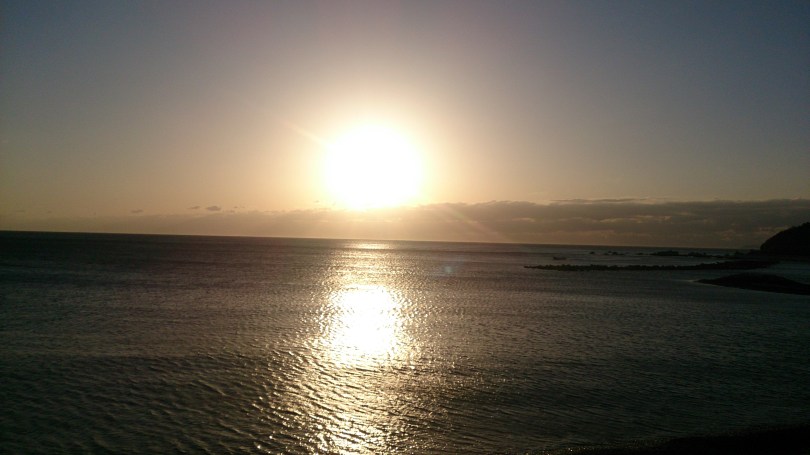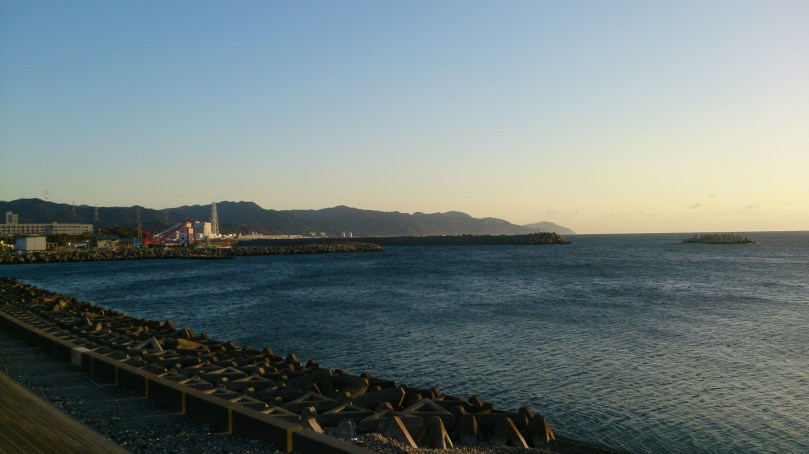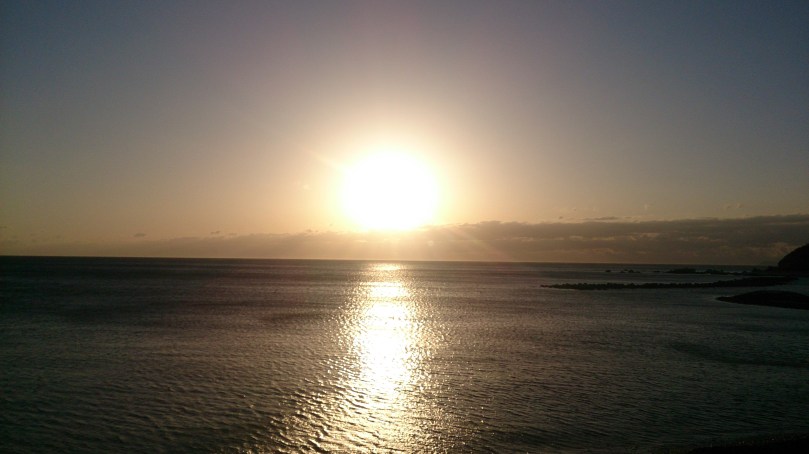It’s about time I offered another post with a bit of local flavor, so here it is. Located on the west side of Shimoshima, the lower island of Amakusa, lie Reihoku and Amakusa-machi. The latter, Amakusa Town, is the namesake for what has become the collective of formerly independent towns on the island; Reihoku still operates separately from Amakusa City. They are two separate areas, but they have some of the most beautiful natural scenery, not to mention a few of the more well-known sightseeing spots, on the island.
 One day after school in my first year here, a couple of the 3rd year JHS teachers had decided to go on a quick whirlwind tour of western Amakusa, intent on taking photos and videos that would further inform students about the greater area in which they live. Though many students have lived here their whole lives, they’ve never been outside Hondo, the most populous/urban area! I understand though; since I’ve been here I’ve yet to make it to quite a few of the highlights on the upper and lower islands. But I think since my time here may be wrapping up, I will make more of a point to visit them in the year that follows. It would be a definite shame to not check out the beautiful natural attractions for sure, a few of which are to follow.
One day after school in my first year here, a couple of the 3rd year JHS teachers had decided to go on a quick whirlwind tour of western Amakusa, intent on taking photos and videos that would further inform students about the greater area in which they live. Though many students have lived here their whole lives, they’ve never been outside Hondo, the most populous/urban area! I understand though; since I’ve been here I’ve yet to make it to quite a few of the highlights on the upper and lower islands. But I think since my time here may be wrapping up, I will make more of a point to visit them in the year that follows. It would be a definite shame to not check out the beautiful natural attractions for sure, a few of which are to follow.
Reihoku is known for its beautiful seaside, pottery, castle, and sunsets. It’s a mainstay on the sunset drives that come highly recommended in the area’s tourist paraphernalia. Here’s a sample of some of the beauty you can see here.
After our stop in Reihoku, we were racing against daylight to catch the sunsets at a couple of the other viewing points, so we stopped off two more times on the way to Amakusa-machi.
After this point, there was little to no sunlight left, but through a bit of determination, we made it to Amakusa-machi to check out Oe Church and Sakitsu Church, with varying levels of lighting, as you’ll see. Amakusa-machi is similarly well-known for its pottery and sunsets, but also for it’s beaches and history with the Hidden Christians. Groups of Christians observing their religion covertly due to oppression during the Edo period were found in rare pockets of multicultural exposure, mostly ports and harbours in Japan (also see Nagasaki, Kobe, to name a couple). It wasn’t until the Meiji era that religious freedom was restored and people were allowed to observe their religions without repercussions. I’m no Christian, but isn’t freedom of choice a wonderful thing?
Anywho, that just about wraps up what was my first whirlwind tour of the western shore of the island I’ve been placed on. More to come soon!



















